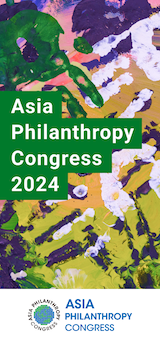One of the most interesting and expected panels at Latimpacto’s Impact Minds 2024 included a session on ‘Risky philanthropy’ that asked, ‘how much risk does Latin American philanthropy take?‘
Carolina Suarez, CEO of Latimpacto, mediated the panel, which included Alejandro Hollan, Treasurer and Member of the board of Escandon Hospital, Mexico; Ricardo Bucio, President of CEMEFI, Mexico; Isabella Luksic, CEO of Luksic Foundation, Chile; José Aguirre, Santo Domingo Foundation, Colombia; José Andrés Díaz, CEO of IC Foundation, Colombia.
How much risk are we assuming in the face of crises, and who should solve the problems?
Ricardo Bucio, who has been CEMEFI’s CEO for the last two-and-a-half years and has implemented massive changes in CEMEFI, including opening up the organisation to more collaboration and risk by fostering relationships with bilateral, multilateral, inter-sectoral, businesses, development agencies, and Civil Society organisations to create a civil space that takes care of itself. He also mentioned that philanthropy should open up to a broader and integral agenda, ‘We generally approach it from one perspective and do not consider the rest’.
Companies also generate social problems, so philanthropy and civic organisations must partner with them. The philanthropy sector in the Latam region needs to partner with those who generate knowledge and create a systemic vision and approach. Latin American philanthropy must get involved in issues of democracy and there must be social and political innovation. We need to increase the capacity of civil society with a comprehensive model.
Jose Aguirre reflected on how family foundations and family-owned corporations with their foundations must take risks to address the crises in their communities. He asked, ‘How much risk are we assuming in the face of crises, and who should solve the problems?’
He continued by saying that those problems should be fixed articulately by the public sector, businesses, and the philanthropy sector because it is clear that the governments in the Latam region do not have the capacity to solve these issues alone. In some cases, the government itself is a structural problem. The corporate sector has a limited capacity to create investments from the market side that generate solutions to the issues we face, and civil society is the third sector. Still, there is the ‘2.5 sector’ between the corporate and the philanthropic sectors: family and corporate foundations.
The question here is, how much risk are we taking? For example, how are we addressing the disparities in income between corporate employees and the corporate/family foundation employees? How are we meant to attend to risk as foundations if we do not have better and well-recognised employees? We need to attend to the needs of philanthropic organisations as a first step if we are hoping to effectively and efficiently transform the systemic reality of the issues we face in the field.
Isabella Luksic mentioned that she has always seen the social sector as the hinge between the public and corporate sectors. The role of philanthropy is to innovate and try new things because the government should not be experimenting with new approaches. The role of social innovation can be taken very appropriately by the philanthropy sector because innovation costs opportunity, money, time, and reputation. That is why this sector should try to pilot solutions and innovations so that the government or corporations can scale them to a massive solution in the future. We have a complementary role to the government. We also need to invest in evaluation and measurement of impact to create scalable solutions to the issues we face in our region.
Alejandro believes that philanthropy should go where no one else goes. There, we must invest in and support businesses through impact investing to find sustainable and scalable solutions. We should do it with a search for impact first.
Jose Andres Diaz, from the IC Foundation, argued that risk is essential when lending resources to rural producers and sustaining their support in the long term. With catalytic capital, we can focus more on creating processes and building capacity in the supported organisation.
The panelists agreed that the two least used assets of foundations are endowments and goodwill. Some foundations are using part of the endowment with higher risks in social investment to generate higher social returns.
Another topic is reputation risk. Foundations do not want reputational risk but must connect with and inspire others by communicating what the philanthropy sector does. We must move from charity to quality, leave modesty aside, and open the way. We should work transversally, nonpartisanally, and push. There have been fears about how to give recognition to all those who are part of the push. To increase philanthropy, we must invite and ask others to participate. We must find our own ways of philanthropy and communication.
Agustín Landa is the founder of Landa Zambrano Asociados and Alliance magazine’s Regional Representative in Latin America.






Comments (0)